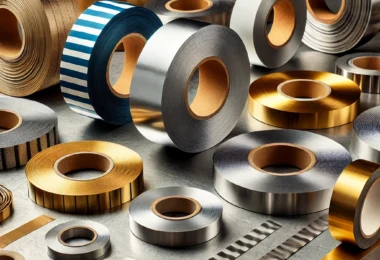An evaporating dish is a small bowl used in science labs to heat up liquids. It helps turn those liquids into gas so you’re left with just the solid part. Simple idea — but it plays a big role in chemistry and lab work.
Whether you’re a student, lab tech, or just curious, here’s everything you need to know about evaporating dishes.
Why Do Scientists Use Evaporating Dishes?
Let’s say you mix salt in water. How do you get the salt back?
You could wait for the water to dry up on its own, but that takes forever. You could try boiling it, but then the salt might splash out or burn.
Evaporating dishes solve this. They’re made to heat liquids safely so that only the solid stuff is left behind — no spills, no mess.
What Exactly Is an Evaporating Dish?
An evaporating dish is a shallow, round container — usually made from heatproof materials like ceramic or glass. It’s built for heating liquids gently until they evaporate.
Once the liquid is gone, the solid residue stays behind. That’s the part scientists often want to study or use in the next step of an experiment.
You’ll often hear it called:
-
Evaporating dish
-
Evaporation dish
-
Lab evaporation dish
All mean the same thing.
Real-Life Uses in the Lab
You’ll find evaporating dishes in almost every science lab. Here’s what they’re used for:
-
Removing water from a salt solution
-
Concentrating a chemical by boiling off extra liquid
-
Crystallizing compounds
-
Getting solids out of a mixture
They’re especially common in school chemistry labs, research centers, and environmental testing labs.
Types of Evaporating Dishes
There’s no one-size-fits-all. These dishes come in different shapes and materials, depending on the job.
1. Porcelain Dishes
-
Most common
-
Strong and heat-resistant
-
Great for classroom and everyday lab use
2. Glass Dishes
-
You can see what’s inside
-
Good for gentle heating
-
Not for super high temps
3. Platinum Dishes
-
Top-of-the-line lab gear
-
Doesn’t react with chemicals
-
Handles extreme heat
-
Very expensive, used in advanced labs
Each one has its purpose. For example, if you’re working with strong acids or need extreme accuracy, a platinum evaporating dish might be your go-to.
What Are Evaporating Dishes Made From?
Here’s a quick look at the most common materials and what they’re good for:
Material Pros Used For Porcelain Cheap, durable, heatproof Most lab work Glass See-through, easy to clean Light heating Platinum Non-reactive, top heat resistance High-end lab experiments
So if you’re just starting out, go with porcelain. If you’re handling delicate or expensive samples, platinum may be worth the cost.
How to Use an Evaporating Dish (Safely)
Using an evaporating dish is pretty simple. Just follow these steps:
-
Set it on a tripod or wire mesh. This keeps it stable when you heat it.
-
Pour your liquid sample in. Don’t fill it to the top — leave room.
-
Heat gently. Use a Bunsen burner or hot plate. Go slow to avoid splashing.
-
Wait for the liquid to evaporate. The solid will stay behind.
-
Let it cool down. These dishes can get super hot. Use tongs or gloves.
Safety Tips to Keep in Mind
-
Always wear goggles and gloves
-
Don’t touch the dish right after heating
-
Avoid sudden changes in temperature (can crack glass)
-
Clean it after every use
Simple steps, but they keep you and your results safe.
Final Thoughts
An evaporating dish may look small, but it’s a big deal in the lab. It helps remove liquids, separate mixtures, and recover solid materials — all with precision.
Whether you’re using a basic porcelain dish or a high-end platinum evaporating dish, it’s a must-have for anyone working with chemicals.
Looking for the Right Equipment?
Looking for quality lab evaporation dishes? Make sure you choose the right type and material for your work. The right tools lead to better, safer results.
Explore lab supply stores online and upgrade your lab setup today.
















